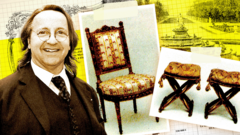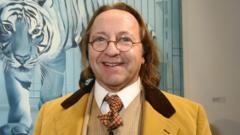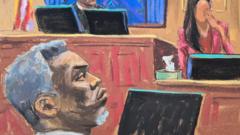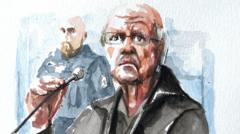In the early 2010s, an intriguing case of fraud unfolded in the French antiques market, centering around two lavish chairs supposedly once owned by the Palace of Versailles. Thought to be the most valuable chairs crafted for Marie Antoinette, the last queen of France prior to the revolution, these artifacts bore the mark of esteemed cabinetmaker Nicolas-Quinibert Foliot. The French government labeled these treasures as "national treasures" in 2013, following Versailles' interest in acquiring them—though the hefty €2m purchase by Qatari Prince Mohammed bin Hamad Al Thani resulted instead.
As the years passed, more royal furniture from the 18th Century emerged, each item with a tale connecting it to noted figures of French history, such as Madame du Barry and Princess Élisabeth. However, by 2016, these seemingly priceless relics were at the heart of a scandal that shook the antiques community in France. Investigations revealed these chairs were, in fact, elaborate forgeries.
The scandal implicated noted antiques expert Georges "Bill" Pallot and award-winning cabinetmaker Bruno Desnoues, leading to their trial on charges of fraud and money laundering. Those who bought some of the pieces, including Galerie Kraemer and its director Laurent Kraemer, were also accused of negligence, a claim they deny. It soon became evident that Pallot and Desnoues had been creating fakes as part of a scheme that began as a light-hearted challenge in 2007 but spiraled into a thriving illicit business.
In court, Pallot characterized the forgery efforts as easy, saying, "I was the head, and Desnoues was the hands." Using low-cost materials sourced from auctions, they crafted replicas that would later fool many experts, resulting in an estimated profit of over €3m—though they claimed profits closer to €700,000.
Lawyers representing Versailles stated that Pallot exploited his academic access to archives, allowing the duo to fabricate pieces that matched the historical inventories. The fraudulent partnership caused significant damage to the reputation of institutions like Versailles.
Triggering investigations was the seemingly extravagant lifestyle of a handyman connected to the forgers. This individual's acquisition of high-value properties raised suspicions, eventually revealing Pallot and Desnoues's scheme. While many allegations against initial suspects were dropped, the case against Kraemer and his gallery was upheld, highlighting their alleged negligence in proper authentication.
Closing arguments in the trial emphasized that skepticism is essential in the realm of antiques, particularly when the stakes are so high. The Kraemer gallery's lawyers insisted they were victims of deception as well, seeking acknowledgment from the court.
As the verdict awaits, the case serves as a reminder of the need for rigorous authenticity standards in the antiques trade—an industry now scrutinized like never before.



















